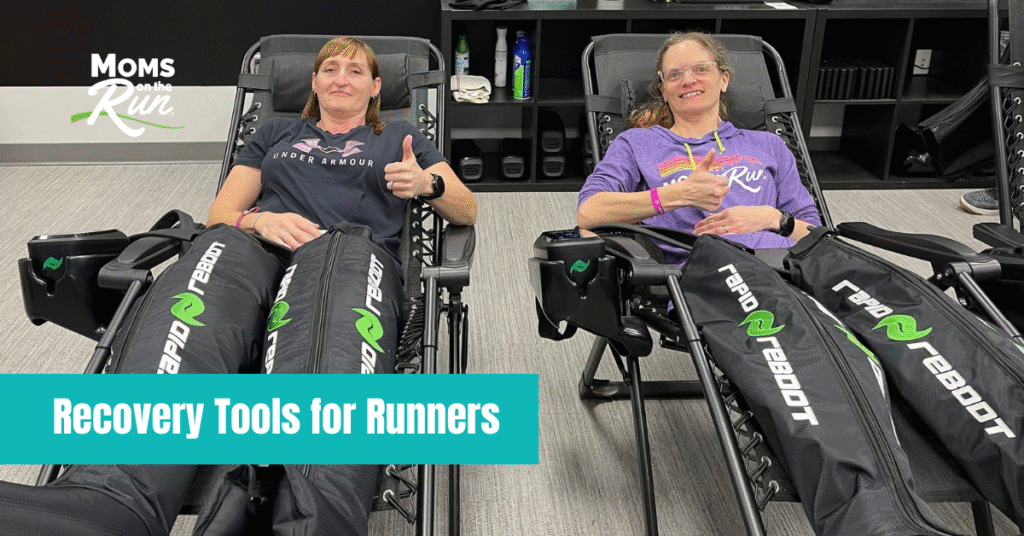Running is an incredible way to stay fit and provides many benefits. However, it can also leave your muscles sore and tired. To keep moving pain-free, recovery is just as important as training. While rest, hydration and stretching help, modern recovery tools can speed up the process. Let’s explore six popular recovery tools for runners—massage guns, foam rollers, cupping, compression boots, cold and heat therapy and electrical stimulation—and break down their benefits and drawbacks.
Massage Guns: Powerful Relief for Sore Muscles
Massage guns, like Theragun and Hypervolt, have become a favorite among runners. They use percussive therapy, which applies rapid pulses of pressure to muscles to loosen tight spots and improve circulation. According to a 2020 study in the Journal of Clinical Medicine, percussive therapy can reduce muscle soreness and improve flexibility; however, using too much pressure can lead to discomfort, so it’s best to start slow.
Pros:
- Provides deep muscle relief without a trip to a massage therapist
- Helps break up knots and increase blood flow
- Easy to use and portable
Cons:
- Can be expensive, ranging from $100 to $500
- Might feel too intense for some users
- Requires proper technique to prevent overuse or bruising
Foam Rollers: A Budget-Friendly Recovery Tool
Foam rolling is one of the simplest and most cost-effective ways to help your muscles recover. It works by applying pressure to tight areas, similar to a sports massage. Foam rolling can decrease muscle soreness and improve range of motion. For best results, focus on key areas like your calves, hamstrings and quads. Many Moms on the Run members regularly foam roll at home.
Pros:
- Affordable and easy to find
- Great for large muscle groups
- Improves mobility and reduces stiffness
Cons:
- Can be uncomfortable, especially for beginners
- Doesn’t reach deeper muscles as effectively as other tools
- Requires consistency for noticeable results
Cupping Therapy: Am Ancient Techique for Modern Recovery
Cupping has been used for centuries to promote healing. It involves placing suction cups on the skin, which pulls blood to the surface. Research published in the Journal of Alternative and Complementary Medicine suggests that cupping may help relieve muscle soreness. If you’re curious, it’s worth trying, especially after long runs.
Pros:
- Increases circulation and speeds up recovery
- Helps reduce muscle inflammation
- Requires little effort—just relax and let it work
Cons:
- Can cause temporary bruising or skin irritation
- Results vary from person to person
- Requires special equipment or a trained professional
Compression Boots: High-Tech Recovery for Runners
Compression boots, such as Normatec and Air Relax, use air pressure to massage your legs and improve circulation. Originally designed for medical use, they are now popular among mom runners and professional athletes. Compression therapy can reduce muscle fatigue and improve recovery times. If you run long distances and have the budget, these boots could be a worthwhile investment.
Pros:
- Helps flush out lactic acid and reduce swelling
- Speeds up muscle recovery after intense workouts
- Allows for passive recovery—just sit back and relax
Cons:
- Expensive, with prices starting around $500
- Bulky and not very travel-friendly
- Requires an electrical outlet or battery power
Cold Therapy: Ice Baths & Cryotherapy
Cold therapy is a go-to recovery method for elite athletes, but even new and casual runners can benefit from taking ice baths regularly. Ice baths and cryotherapy use low temperatures to reduce muscle inflammation and speed up recovery. A 2017 study in the Journal of Physiology found that cold therapy can help reduce muscle soreness, but its long-term effects on performance remain unclear. Many runners swear by it, but it’s definitely not for everyone.
Pros:
- Decreases muscle soreness and swelling
- Speeds up recovery after intense workouts
- Can be done at home with a simple ice bath
Cons:
- Ice baths can be uncomfortable
- Cryotherapy is expensive and less accessible
- Not suitable for everyone, especially those sensitive to cold
Heat Therapy: Heating Pads & Infrared Sauna
Heat therapy is the opposite of cold therapy—it relaxes tight muscles and increases blood flow, making it great for post-run stiffness. Heat therapy can enhance circulation and reduce stiffness, making it useful for runners who experience tight muscles after training.
Pros:
- Helps loosen tight muscles and improve flexibility
- Increases circulation, which aids in recovery
- Can be used before or after a workout
Cons:
- Not ideal for acute injuries or inflammation
- Some heat therapy methods, like infrared saunas, can be expensive
- May not provide immediate relief for sore muscles
Electrical Stimulation: TENS and EMS Units
Electrical stimulation (E-stim) uses small electric pulses to activate muscles and nerves. Two popular types are transcutaneous electrical nerve stimulation (TENS) and electrical muscle stimulation (EMS). Research in the Journal of Strength and Conditioning Research found that EMS can help with muscle activation and recovery, though it’s most effective when combined with other recovery methods.
Pros:
- Helps reduce pain and improve blood circulation
- Can be used for muscle recovery and relaxation
- Available in small, portable devices
Cons:
- Requires proper setup to use effectively
- Effectiveness varies from person to person
- Some units can be costly
Which Recovery Tool Should You Choose?
Ultimately, the best recovery tool depends on your needs and budget. If you want deep muscle relief, a massage gun is a great choice. For an affordable and effective option, foam rollers work well. If you prefer alternative methods, cupping could be worth exploring. Cold therapy is ideal for reducing inflammation, while heat therapy helps loosen muscles. And if you’re looking for a high-tech solution, compression boots and electrical stimulation can take your recovery to the next level.
Recovery is essential for staying injury-free and improving performance. While these tools can help, they work best when combined with good hydration, proper nutrition and quality sleep. No matter which method you choose, making recovery a priority will keep you running strong!
